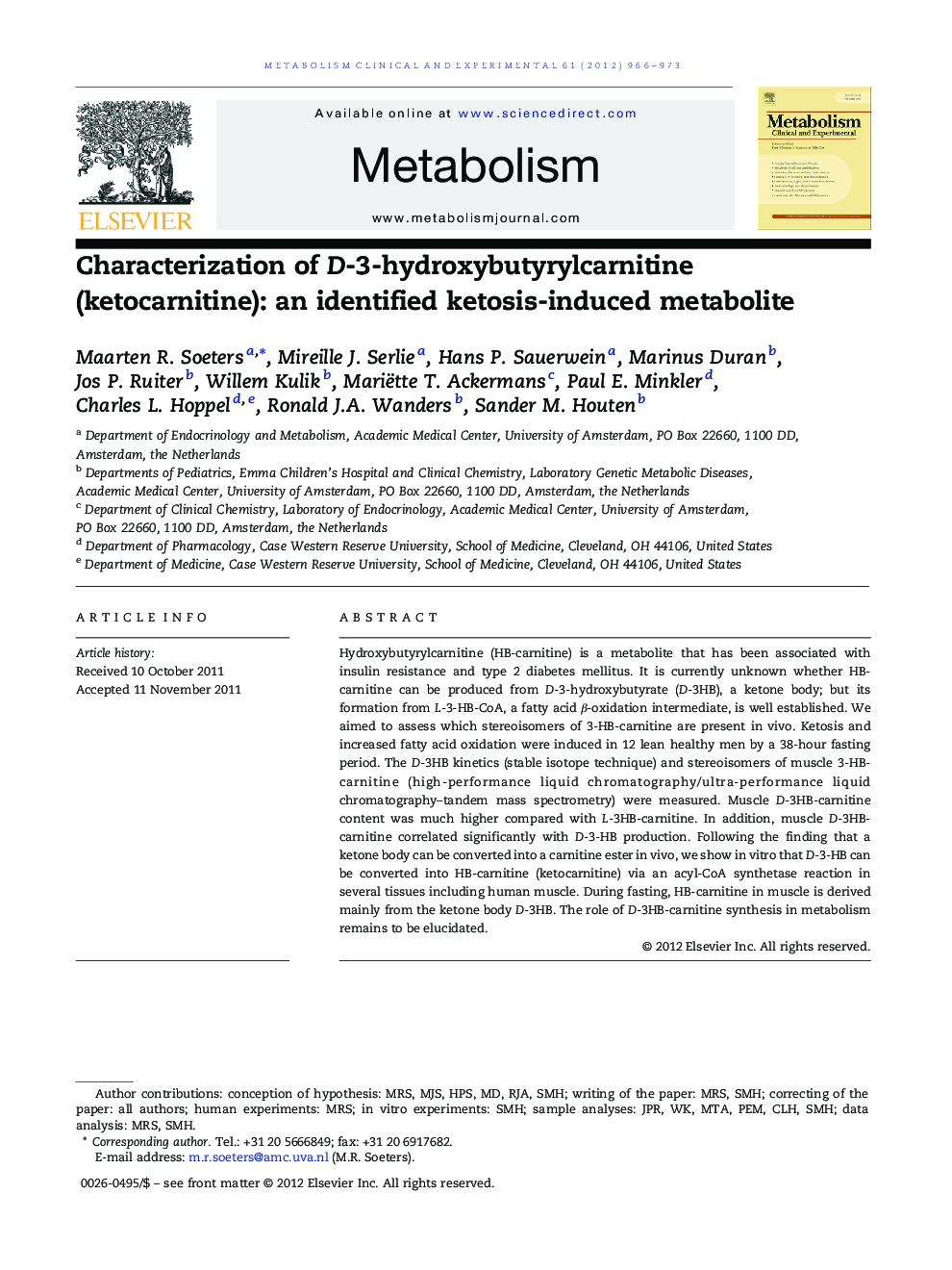| Article ID | Journal | Published Year | Pages | File Type |
|---|---|---|---|---|
| 5903709 | Metabolism | 2012 | 8 Pages |
Abstract
Hydroxybutyrylcarnitine (HB-carnitine) is a metabolite that has been associated with insulin resistance and type 2 diabetes mellitus. It is currently unknown whether HB-carnitine can be produced from D-3-hydroxybutyrate (D-3HB), a ketone body; but its formation from L-3-HB-CoA, a fatty acid β-oxidation intermediate, is well established. We aimed to assess which stereoisomers of 3-HB-carnitine are present in vivo. Ketosis and increased fatty acid oxidation were induced in 12 lean healthy men by a 38-hour fasting period. The D-3HB kinetics (stable isotope technique) and stereoisomers of muscle 3-HB-carnitine (high-performance liquid chromatography/ultra-performance liquid chromatography-tandem mass spectrometry) were measured. Muscle D-3HB-carnitine content was much higher compared with L-3HB-carnitine. In addition, muscle D-3HB-carnitine correlated significantly with D-3-HB production. Following the finding that a ketone body can be converted into a carnitine ester in vivo, we show in vitro that D-3-HB can be converted into HB-carnitine (ketocarnitine) via an acyl-CoA synthetase reaction in several tissues including human muscle. During fasting, HB-carnitine in muscle is derived mainly from the ketone body D-3HB. The role of D-3HB-carnitine synthesis in metabolism remains to be elucidated.
Related Topics
Life Sciences
Biochemistry, Genetics and Molecular Biology
Endocrinology
Authors
Maarten R. Soeters, Mireille J. Serlie, Hans P. Sauerwein, Marinus Duran, Jos P. Ruiter, Willem Kulik, Mariëtte T. Ackermans, Paul E. Minkler, Charles L. Hoppel, Ronald J.A. Wanders, Sander M. Houten,
